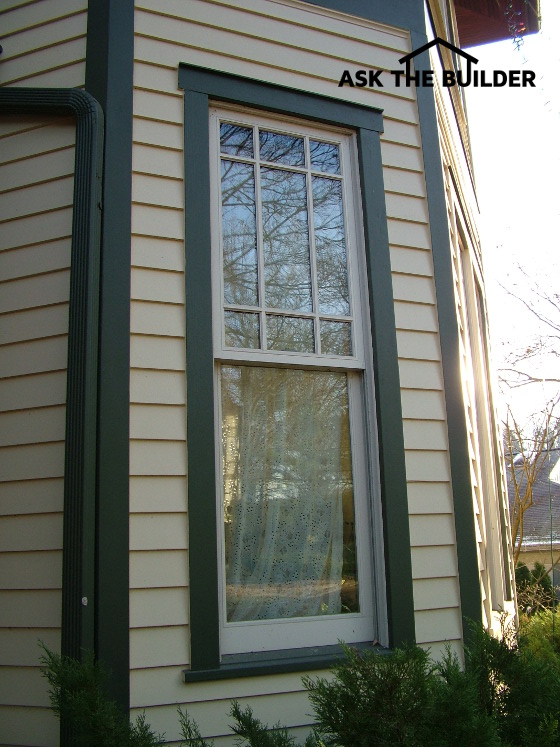Shrinking a Window Opening

Shrinking a tall window like this is easy. The problems begin when you try to make a window wider. PHOTO CREDIT: Tim Carter
DEAR TIM: I'm pre-approved to buy an existing home and some of the ones I like have tall windows. I don't like them and would love to convert the tall windows to short ones.
Is this possible and is it expensive? How much work is involved and what should I avoid?
Do you feel this is a job for a do-it-yourselfer or should I hire a professional? Eric G., Fairborn, OH
DEAR ERIC: Tall windows are common in many Victorian-era homes and those that sport a contemporary flair.
Big Glass = Big Light
The extra glass area lets in lots of light and creates a unique look when you are inside looking out, so be sure you give those tall windows a one or two-month test drive before you break out the pry bar. Be prepared for a little bit of sticker shock. High-quality windows can be pricey but they are worth every penny.
Free & Fast BIDS
The simple answer to your question is it is not hard to reduce the height of a tall window. It doesn't matter whether you are reducing the opening from the top or the bottom or both directions. My answer would be completely different if you told me you wanted to enlarge the width of the window. When you decide to do this, the scope of the job changes dramatically. But if you want to reduce the width and shorten a window opening at the same time, that is also a relatively easy task.
Virtually every window has a structural header or beam that passes over the opening. Windows and doors are not designed to carry any loads and for all intents and purposes they float in the rough opening where they reside. In fact, there is supposed to be a one-half inch gap on the sides and top of widows and doors so they don't even come into direct contact with the structural framing that surrounds them. If weight is placed upon a window or door you will often notice it is hard to operate, it doesn't close properly and in worse cases, the glass shatters unexpectedly.
The biggest challenges one often faces when reducing the size of a window are:
- finding a new window that matches the original ones
- waterproofing the new window
- matching the exterior and interior wall finishes
You should be able to find a window that matches, or is a close match, if you are patient. For example, some wood window manufacturers still offer as an option horns on windows to match those you often see on 100 year-old window sashes. Window sills are also important to match so pay attention to the existing windows at your house and take numerous photos of them with you when you go to shop for new windows.
The flashing details around the new window are extremely critical. You can't depend upon caulk to keep you and the walls of your house dry over the long haul. You need to collect any water that is streaming down the inside of the wall above the new window and redirect this water to the exterior. Existing water infiltration barrier membranes must be securely fastened to the new window to ensure water can't get between the window and the house framing.
The actual process of reducing the opening to accommodate the new window is easy. You simply frame the rough opening to the exact dimensions provided by the window manufacturer. Use properly-sized framing materials so you can install the correct interior and exterior finishes that will be in the same plane as the current finishes. You may have to add thin strips of lumber to build out framing so that modern materials work.
The exterior finish is often much harder to match than the interior. If the exterior is wood or similar siding, avoid butting the new material next to the siding that was cut to fit the old window. Try to remove some of the existing siding so the butt joints can be randomly staggered. If the exterior is brick, take the time to tooth out adjacent brick so only the brick next to the window are cut.
You may discover that part of the job is best handled by a professional and then you can worry about finishing the interior surfaces. I would highly recommend this if you have never installed a new window before. Take a day off from work to watch how it is done so you can tackle the next one by yourself.
Perhaps the most important step in the window replacement process is the waterproofing step. A mistake here may show itself quickly, but smaller chronic leaks can do lots of silent damage that may not expose itself for many years. It is important to caulk a window once the installation is complete, but caulk should not be the sole waterproofing defense.
Pay close attention to the written installation instructions provided by the window manufacturer. They often call out the precise rough-in dimensions for the new opening. Follow these to the letter. These same instructions often have very good directions for attaching water membranes to the window. Note that the membranes and taping methods mimic how shingles are installed. The upper layers lap over lower layers.
Column 549
One Response to Shrinking a Window Opening